| Weight | 1000 g |
|---|---|
| Belly | 10mm. |
| Blade Size and Type | 10.5 inch (26cm) and Unpolished blade. |
| Handle Size and Type | 5.5 inch (14cm) Rosewood full tang blade handle. |
| Hardness of steel | spine=22-25 RC, belly=45-46 RC, edge=54-55 RC. |
| Upper Spine | 1.9 Inch. |
AFGHANISTAN OPERATION ENDURING FREEDOM KUKRI
This is one of the very famous knives of Ex Gurkha Khukuri House(EGKH). Afghanistan Operation Enduring Freedom New Version Kukri (AOEFK) is another outstanding frontline khukuri created by Ex Gurkha Khukuri House(EGKH) designated for soldiers serving in Afghanistan. This is the 2011 issue of kukri to the British Gurkha for in Afghanistan. Typical “Jungle’ or “Training /Combat” knife-shaped blade but the mounting peak is somewhat straightened for swift in and out draw.
$105.00
This is one of the very famous knives of Ex Gurkha Khukuri House(EGKH). Afghanistan Operation Enduring Freedom New Version Kukri (AOEFK) is another outstanding frontline khukuri created by Ex Gurkha Khukuri House(EGKH) designated for soldiers serving in Afghanistan. This is the 2011 issue of kukri to the British Gurkha in Afghanistan. Typical “Jungle’ or “Training /Combat” knife-shaped blade but the mounting peak is somewhat straightened for swift in and out draw. Unpolished so doesn’t reflect, and only 11” long so carrying and movement are easier and faster. The typical khukuri-handle is replaced by EGKH’s exclusive handle where the top front portion is erected from the actual surface/level to protect the using handle, the erected contour will ensure the hand stays restricted within the handle so it can be prevented from slipping towards the sharp edge of the khukuri blade. The design and shape of the handle are crafted to give the best possible and fast handling. The full flat tang goes all the way through the handle, glued to the wooden pieces, and further riveted to strengthen the whole fixture. The regular butt cap (pommel) is discarded but the naked tang pops out of the handle where a circular hole is made as a lanyard hole (wrist cord). Whitewood is used for the handle to match it or camouflage it with the uniforms of the soldier. All Khukuris have two pockets on the back of the scabbard which hold a blunt steel called “chakmak” for sharpening the blade or for striking spark from flint and a little knife known as “karda” used for skinning small animals such as rabbits. The notch (kaura or kaudi) in the blade near the hilt of most khukuris serves as conduit for the blood on the blade to drip out, thus preventing it from soiling the hilt, as well as a device for catching and neutralizing and enemy blade.
Only logged in customers who have purchased this product may leave a review.
You may also like…
-
Blade Size: 11“
-
Blade Size: 12“
-
Blade Size: 10.5“
-
Blade Size: 12“

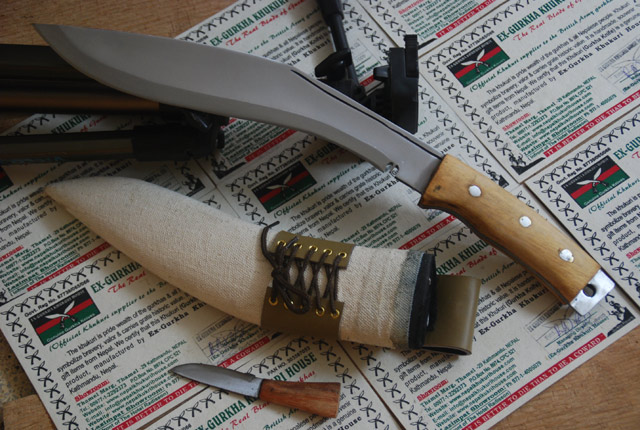
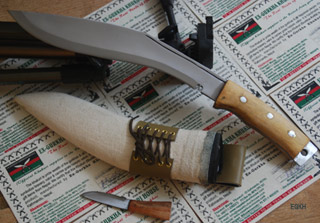
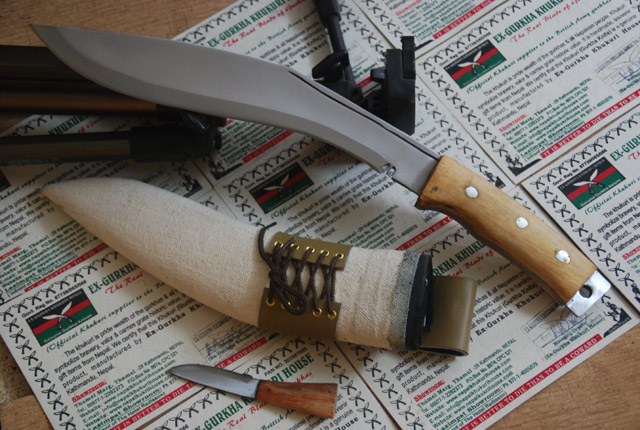
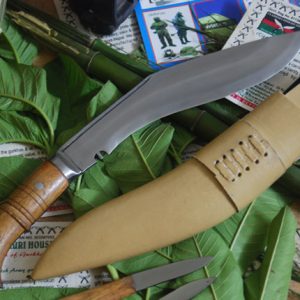
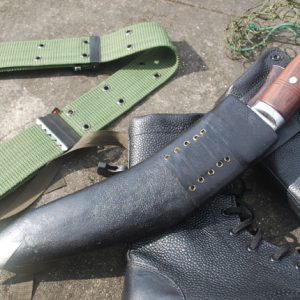
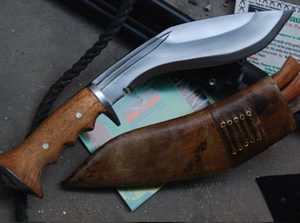
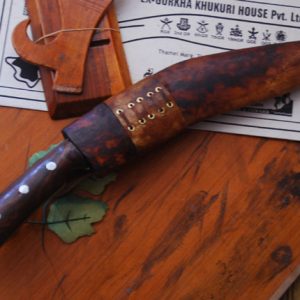
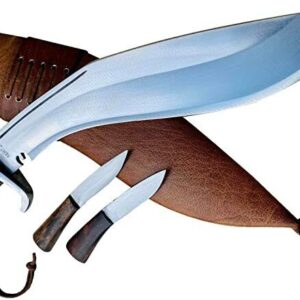
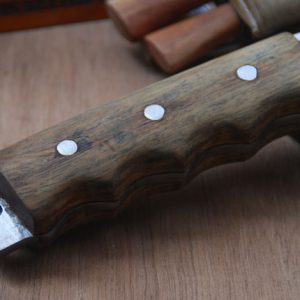
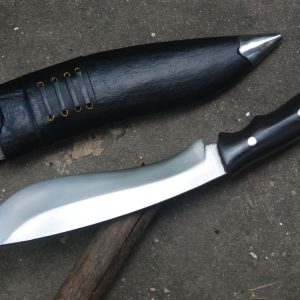
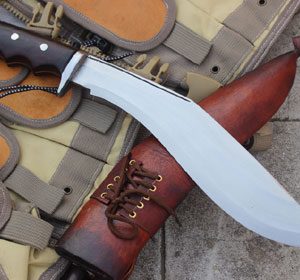
Reviews
There are no reviews yet.